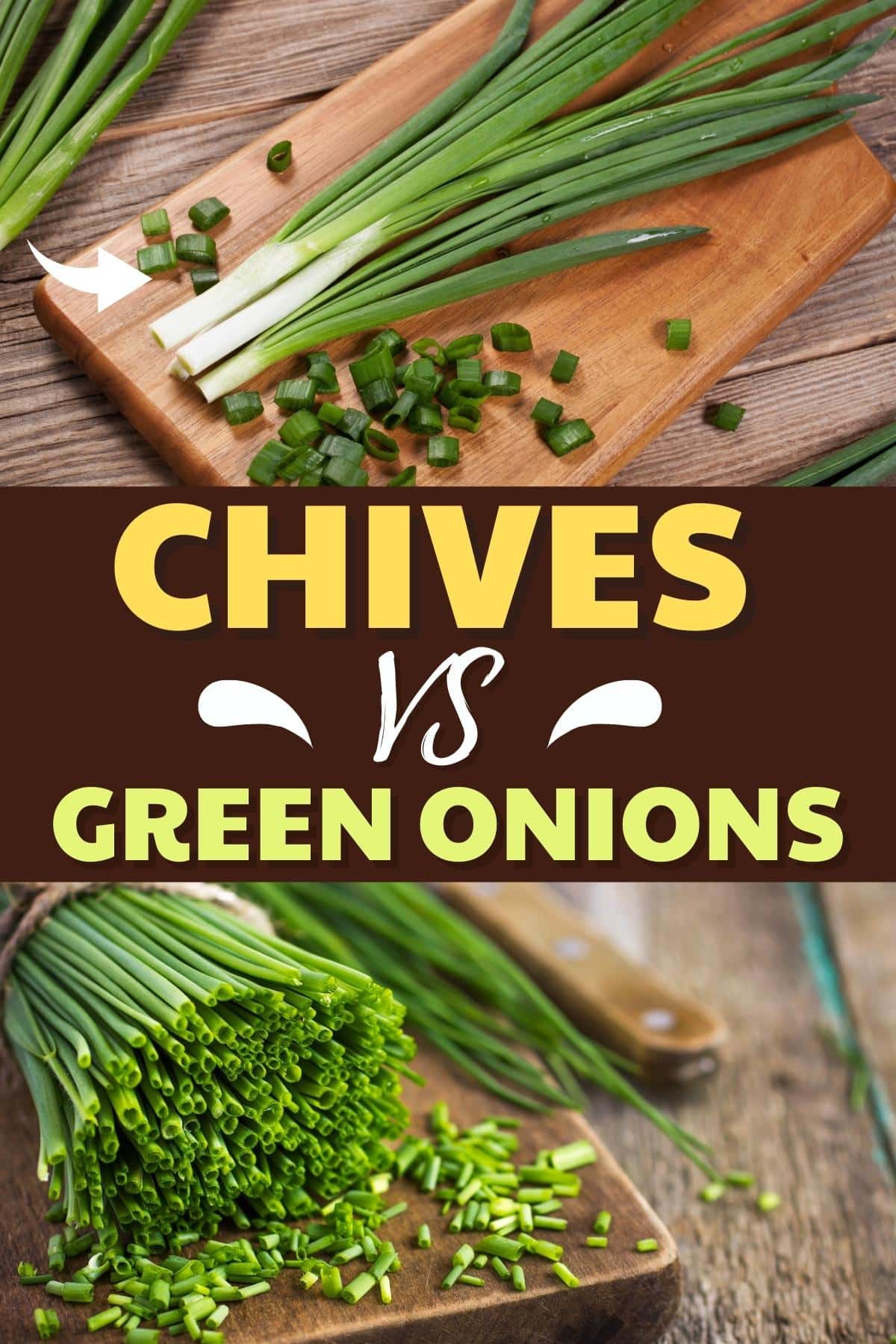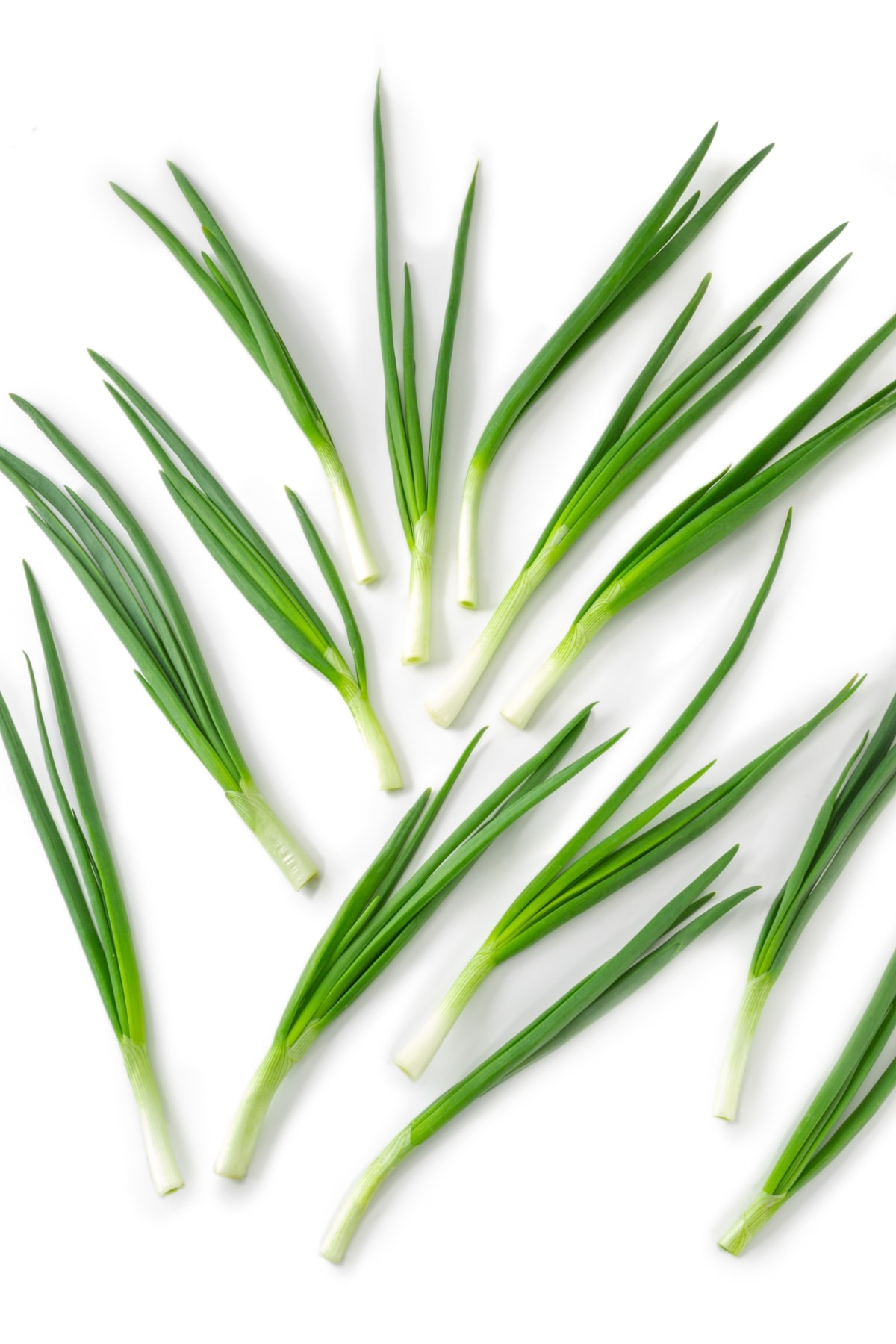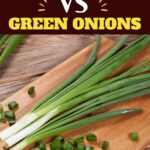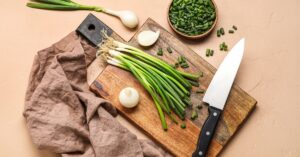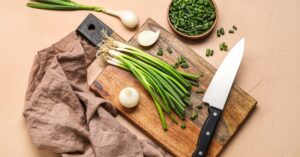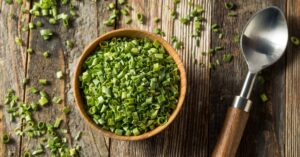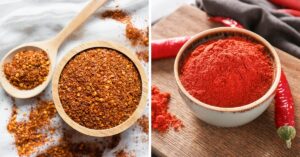Chives are thin, delicate herbs with hollow leaves and a mild onion flavor. They’re often used as a garnish due to their subtle taste. Green onions, also known as scallions, have a slightly stronger flavor and consist of both white bulbs and green stalks.
Green onions are a vegetable, while chives are an herb. It’s wild that two such similar things have different designations!

And that’s just one of the many fascinating things about these two.
Both can be used to add a mild onion-like taste to dishes, but green onions offer a more robust flavor and are commonly used in cooking.
Let’s dive into more about what sets them apart!
Chives vs. Green Onions
Both belonging to the allium family, chives and green onions are similar in many ways. However, there are certain things that set them apart. Let’s take a closer look.
Appearance:
Chives have thinner, more delicate stems that are green throughout. Green onions start out white at the root and transition to green toward the top.
Texture:
Since chives are thinner, their texture is barely noticeable. The white segment of a green onion is crunchy, much like an onion. The green segment is similar in texture to chives, only coarser.
Flavor:
Green onions have that pungent onion flavor. Chives are the same but milder. This is why chives are herbs, while green onions are vegetables.
Heat Tolerance:
Green onions can handle heat well, making them ideal for stir-fries and grilling. Chives turn bitter quickly when cooked at a high temperature.
Culinary Uses:
As delicate herbs, chives are great for garnishes. Cook them briefly, but they’re more often served raw.
Use fresh chives to garnish soups, salads, stews, potato dishes, and egg dishes. You can also blend them in dips and dressings.
Green onions are hardier, especially the white part. Cook them as you would an onion. Add them to soups and stir-fries for a nice, onion flavor.
They’re widely used in Asian cuisine. They’re often added to stir-fries, along with garlic and ginger.
You can also chop them up and mix them in batters to make savory baked goods like biscuits and scones. Green onions are a key ingredient in scallion pancakes.
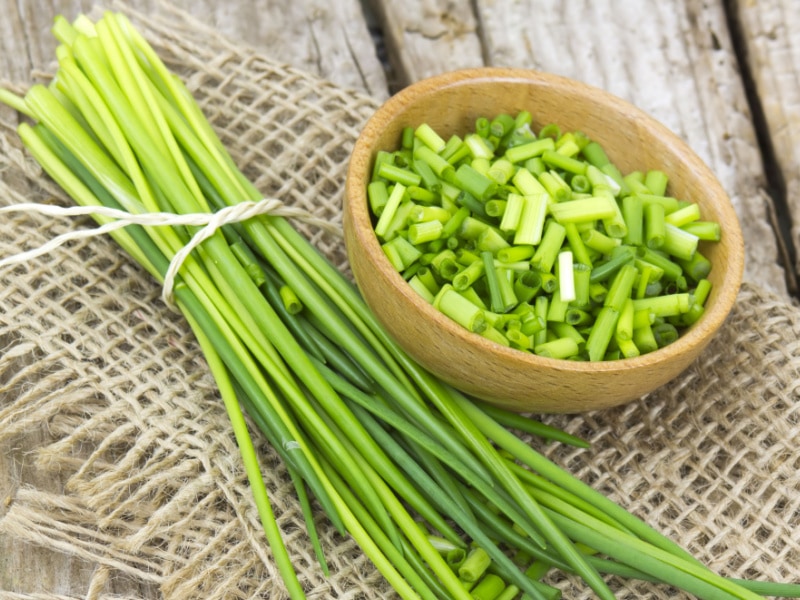
What Are Chives?
Chives are green herbs belonging to the allium genus. They have purple flowers and long, thin, green stems that look like blades of grass.
While the flowers are edible, it’s the stems that we go for. They have a mild, grassy onion, flavor, and are often chopped and used as a garnish.
Chives are bulbous perennials, just like onions. But these bulbs are often removed before they’re packed and sold. No one really gets to see them.
What Are Garlic Chives?
Also called Chinese chives, garlic chives have flat stems with a mild garlic flavor. Oddly enough, they belong to a different family.
You can use garlic chives in place of regular chives. They;re especially ideal if you want to give your dish a garlic flavor profile.
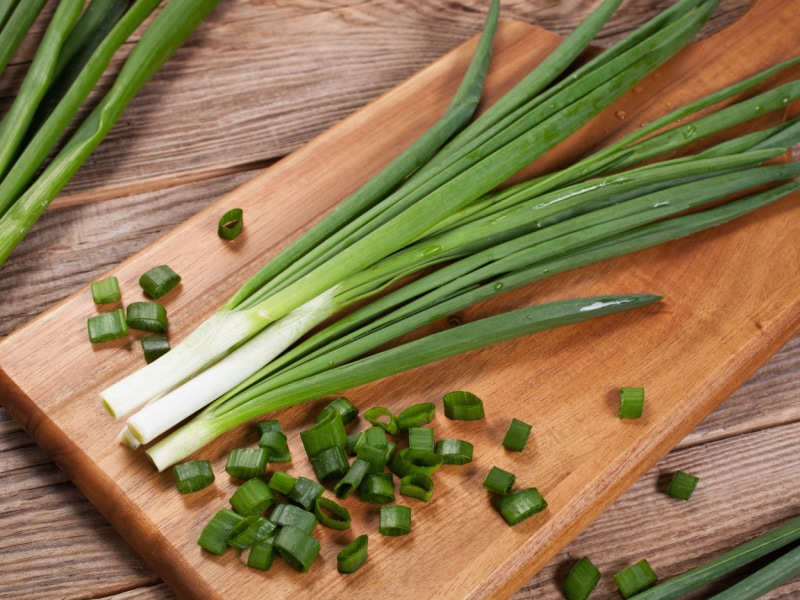
What Are Green Onions?
Green onions (or scallions) are immature onions with long, thick hollow stems.
They can come from different types of onions. Their defining quality is that they’re pulled up from the ground while still young.
They start out with a narrow white bulb at the bottom, followed by white roots. Then, they transition into dark green leaves towards the top.
Green onions are related to shallots, leeks, and garlic. They also have a mild onion flavor. However, compared to chives, green onions have a stronger taste. The white segment has a stronger flavor, while the green stalk tastes milder.
They’re not to be confused with spring onions, which are left to grow longer. They have small, rounded bulbs at the base with a stronger onion flavor than scallions.
Can You Substitute Chives for Green Onions?
Yes, but it depends. If you plan to serve them raw, then you can definitely use chives in place of green onions. They can be used interchangeably for no-cook recipes like dips and dressings.
Just remember chives have a milder flavor, so use more of them. Likewise, use fewer green onions when replacing chives.
For reference, you’ll need 2-3 tablespoons of chopped chives for 1 medium green onion.
For recipes that call for cooking in high heat, you can’t swap chives for green onions. They can’t stand high heat and will turn bitter.
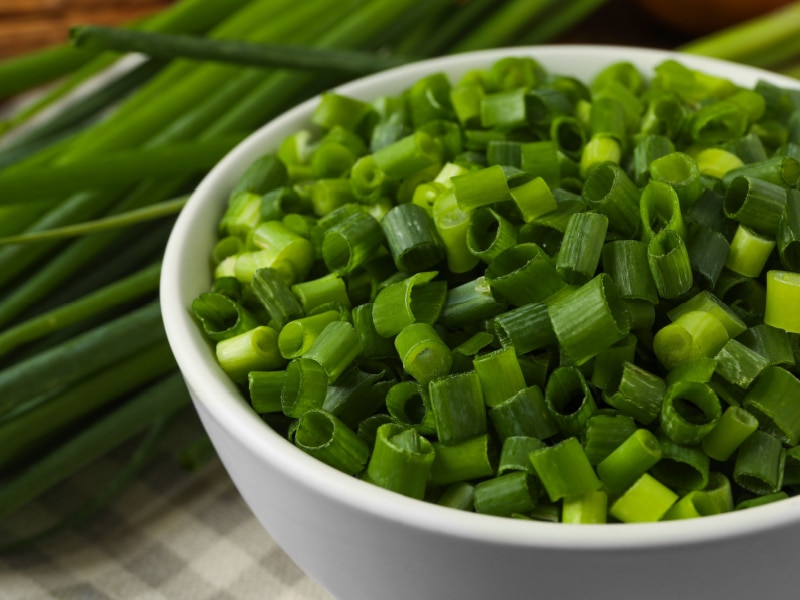
How to Store Chives and Green Onions
Chives have a short lifespan, and they won’t keep long even when refrigerated. Use chives within 1 to 2 days of purchasing them. Green onions have a little longer lifespan. They last about 1 week or so in the fridge.
For storage, place both in a Ziploc bag or an air-tight container. Keep them in the crisper drawer of your fridge.
Tips:
- Wash and dry both chives and green onions before storing.
- You can chop them up or leave them whole.
- For a steady supply of green onions, place the roots in water, and their stems will regrow. Sadly, you can’t do the same for chives.
